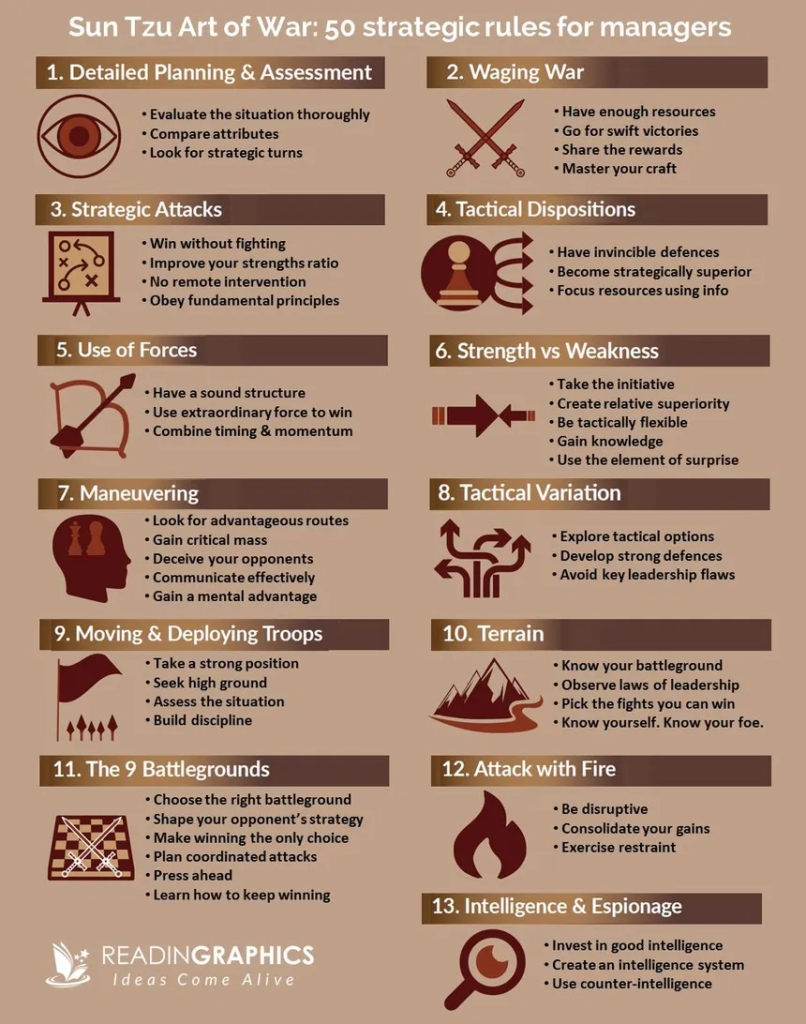Sun Tzu Art of War Principles
The Art of War by Sun Tzu consists of 13 chapters, each covering a principle of warfare. These principles are not just confined to military strategy but can also be applied to business and leadership. Here’s a brief overview of the 13 principles:

- Estimates: This chapter discusses the importance of assessing the situation before engaging in conflict.
- Waging War: It covers the costs and benefits of war, emphasizing the importance of avoiding unnecessary battles.
- Attack by Stratagem: This principle focuses on using deception and strategy to gain an advantage.
- Tactical Dispositions: It deals with positioning and the importance of flexibility in strategy.
- Forces: This chapter discusses the composition and management of forces.
- Weak Points and Strong: It emphasizes identifying and exploiting the enemy’s weaknesses while protecting one’s own strengths.
- Military Maneuvers: This principle covers the movement and positioning of troops.
- Variation in Tactics: It stresses the importance of adaptability and the use of different tactics.
- The Army on the March: This chapter deals with the logistics and movement of an army.
- Terrain: It discusses the importance of understanding and utilizing the terrain.
- The Nine Situations: This principle covers various scenarios and how to handle them strategically.
- The Fire Attack: It deals with the use of fire as a strategic weapon.
- The Use of Spies: This chapter emphasizes the importance of intelligence gathering and espionage.
These principles provide a comprehensive framework for strategic thinking and can be applied to various fields beyond military strategy, including business and leadership.